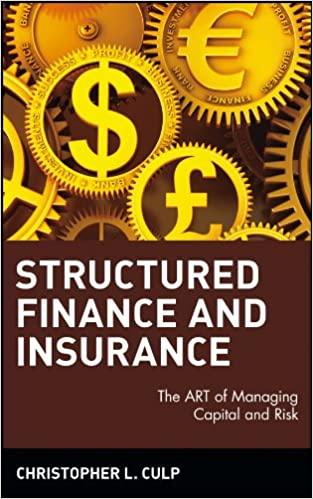Question
You are trying to value a private firm, Acme Inc., to figure out how much money you can expect to raise in an IPO. Acme
You are trying to value a private firm, Acme Inc., to figure out how much money you can expect to raise in an IPO. Acme Inc. manufactures pool equipment. In the current year, Acme has sales of $1M and the free cash flow of $0.5M.
You identified two publicly traded firms, Firm A and Firm B, with very similar business models, on which you will base your valuation.
You looked up the following information, for the current year, for these comparable firms:
Firm A:
Market value of equity: $100M
Book value of equity: $50M
Book value of debt: $30M
Equity beta: 1.7
Sales: $10M
Free Cash Flow: $6M
Firm B:
Market value of equity: $500M
Book value of equity: $300M
Book value of debt: $10M
Equity beta: 1.2
Sales: $55M
Free Cash Flow: $30M
1. What is Acmes valuation implied by the sales multiple of comparable firms?
2. What is Acmes valuation implied by the cash flow multiple of comparable firms?
3. You expect that Acmes sales and cash flows will grow in perpetuity at the annual growth rate of 3%. Furthermore, you observe that the current yield on the 30-year T-bond is equal 2%. You estimate that the expected market risk premium over the 30-year bond is 5%. Assume that the beta of debt is 0.25. What is the Discounted Cash Flow valuation of Acme? (HINT: Use the Gordon Growth Formula.)
4. If Acme had $5M of excess cash on its balance sheet, and the comparable firms did not, how would your estimate of how much money you can raise in an IPO change?
Step by Step Solution
There are 3 Steps involved in it
Step: 1

Get Instant Access to Expert-Tailored Solutions
See step-by-step solutions with expert insights and AI powered tools for academic success
Step: 2

Step: 3

Ace Your Homework with AI
Get the answers you need in no time with our AI-driven, step-by-step assistance
Get Started


